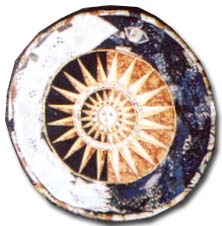East West music encounter
For probably the first time in my life I sat through a western classical concert. Western classical usually leaves me cold, most probably because I do not understand the first thing about it. It seems to me like one of those kinds of music that needs to be heard on different levels. Like one can appreciate heavy metal only if you have some idea of guitar playing, else it only so much noise.
The concert was organized by the Bangalore School of Music (BSM) and it was supposed to be a taste of western classical mixed with Indian music. The Amsterdam orchestra performed Schubert's symphony No 5 along with members of the BSM orchestra.The sound of close to thirty violins was amazing. After that there was a solo performance by Svante Henryson. The highlight of the evening was a performance by Pandit Vishwa Mohan Bhatt and the Dutch Cellist Svante Henryson.
Now that the facts have gotten out of the way, let me start with the impressions. The biggest difference between western and Indian classical music I could detect was in the seating. While Indian classical musicians usually face the audience and maintain some knowledge of the audience's presence the western musicians seem to be deeply engrossed in the music sheets in front of them. While this may be very necessary to their art, it still comes across as a bit cold. And of course the matter of the applause. It seems the audiences never seem to know when to clap or not. I read somewhere that a symphony includes the pauses between the pieces, and the silence is supposed to enhance the piece, but I can attest that I was absolutely terrified to applaud at any time. Even when I heard others doing so. At one point the conductor raised an arm in protest, without turning around, but after a couple of times, he seemed to give up. I was building a whole case of the contrasts and similarities between Indian classical music and western, and I got a chance to test them out during the actual so-called 'encounter'.
The two maestros had met only the previous day, and the entire audience was blown away by the quality of music played. I was already predisposed to like Svante, especially because he was a 'reformed' rock musician, and still retained a trademark ponytail from his presumably wilder days. He had played three compositions, and the second one was called Black Run, a name derived from skiing terminology. This was absolutely rollicking and brought the audience to a loud ovation. So when the two maestros met, we were only expecting the best. The entire piece took the form of a traditional Indian classical concert- i.e. a slow start, a few solos, lots of improvisation, and a triumphant finale. It wasn't much different than what I've heard before, but the cool thing was the Mohan Veena. This veena is a modified Hawaiian guitar, which sounds much like the veena and is about a hundred times easier to lug around. The cello already sounded like a tormented violin, and especially since Svante had an amplifier plugged in- complete with a distortion pack. He followed the Indian rhythms with amazing ease and managed to fit the cello into the format. Occasionally he did look a bit flustered, waiting for some hidden signal from either VMB or the Tabla player who accompanied them, but these moments were few and far between. During the jugalbandi sessions (a duet involving two artists both having an equal role in the performance), he often abandoned the bow for his fingers, and the plucking of cello strings was wonderful to hear. Both the pieces they played were composed mostly by VMB, but the encore was Svante's show. During the earlier pieces, I was wondering how it would be if the Indian musicians were asked to conform to the western tradition instead of vice versa, and the encore proved that when you have talented musicians together, almost anything they do will sound great.




<< Home